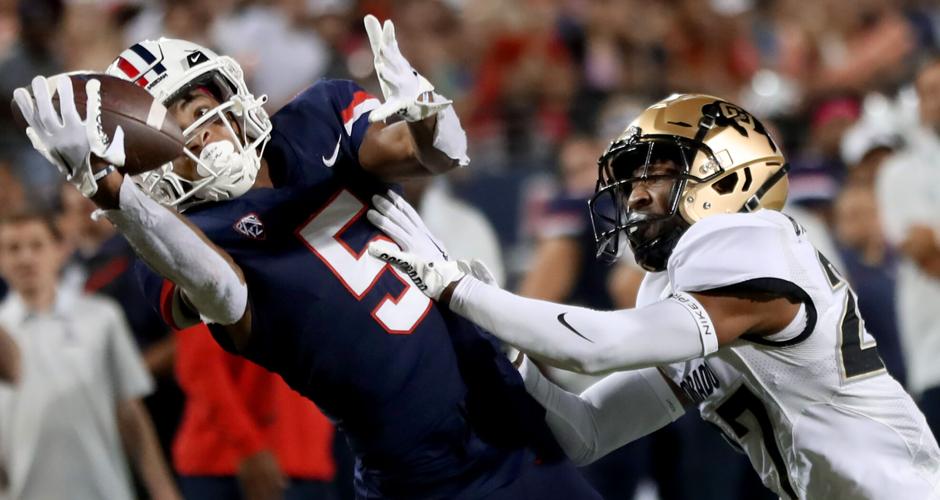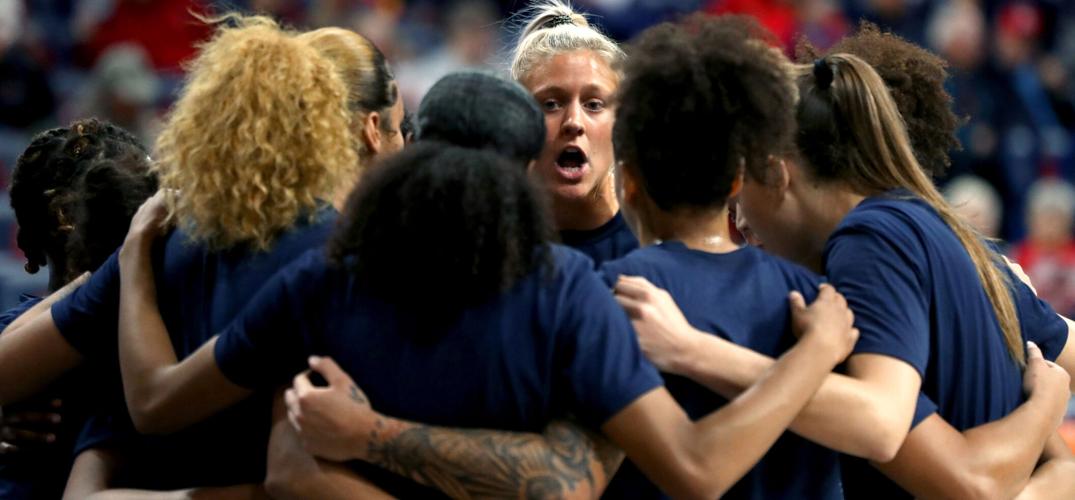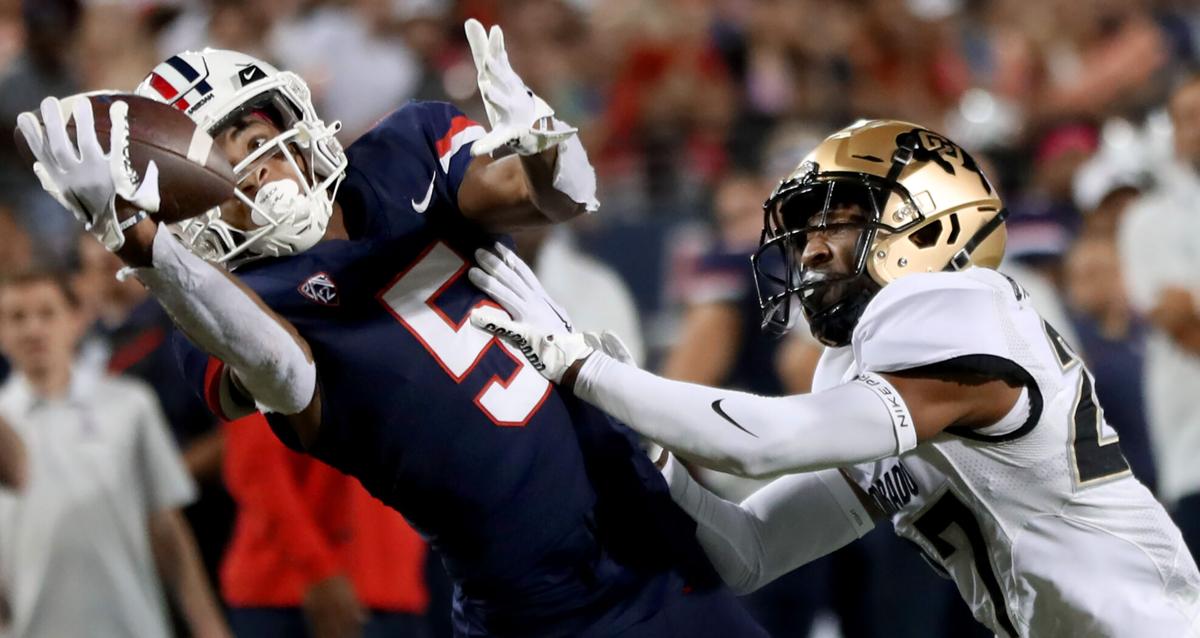As recently as 10 years ago, the leading reasons an athlete transferred to a new school were probably:
- Lack of playing time.
- Academic or off-field issues.
- A coaching change.
Today, the list would probably be:
- Financial opportunities.
- Play for a better team.
- A sense of entitlement.
In the 1950s, baseball infielder Harry Simpson became known as "Suitcase Simpson" because he played for five MLB teams in eight years. It seemed excessive.
Today, former five-star quarterback J.T. Daniels of SoCal’s Mater Dei High School has jumped from USC to Georgia to West Virginia — starting 29 games over five seasons — and is again in the NCAA transfer portal, a latter day Suitcase Simpson.
The core of college sports has forever changed. Get it while you can.
On Monday and Tuesday, a total of 1,010 FBS players entered the portal. Each of the 131 FBS schools has 85 scholarships, so that means about 10% of the 11,135 college football players on scholarship are packing a suitcase.
Arizona has lost at least 16 players, including go-to receiver Dorian Singer, who within 48 hours had been offered scholarships by Utah, Oklahoma, Penn State, Oregon and ASU, among others.
Why would Singer leave Arizona after leading the Pac-12 with 1,105 receiving yards? How can he expect to improve his production at, say, Oklahoma or Utah? That’s unrealistic.
Perhaps Singer became disenchanted with Arizona a week ago, when Wildcat quarterback Jayden de Laura and tight end Tetairoa McMillan were photographed standing next to their new Dodge automobiles at a Jim Click dealership.
Singer didn’t get a new car. Could it be that simple?
And it’s not just a losing program such as Arizona that is experiencing unprecedented roster turnover. According to Sports Source Analytics, Texas A&M, Oregon, Stanford and Alabama had all lost at least 16 players to the portal through Tuesday.
This is the I-want-mine era of college sports, which will never again be confused with the good old days, when a popular Beach Boys song — "Be True to Your School" — was symbolic of the loyalty of a college athlete.
Jeff Fairholm, a starting Arizona receiver in the late 1980s who went on to play nine years in the Canadian Football League, reacted to Singer’s move by tweeting this message: "I am saddened and somewhat sickened by what the NCAA has become due to the portal and NIL. When I went to school it was a commitment which quickly grew into an absolute love for my school. I am a Wildcat and always will be."
Is this what college football wants to be? A year-to-year gala of free agency?
It looks that way. The Me-First Era.
And it’s not just football. Last spring, Arizona women’s basketball coach Adia Barnes watched helplessly as five of her players transferred to Oregon State, USC, Colorado, Oklahoma State and Kansas State.
Greener pastures? So far, none of the five UA transfers average more than 9.7 points per game.
On Wednesday, Barnes said she expects the instability will continue to increase and more athletes seek financial opportunities.
"You have to recruit that way," she said, mentioning that women’s basketball programs at South Carolina and Texas Tech guarantee each player $25,000 a year, minimum, in NIL endorsement money.
"I hope Arizona can do that, too," said Barnes.
Cate Reese, in her fifth year as an Arizona starting forward, has watched more than 10 of her Wildcat teammates transfer.
"Some feel trapped at a school they’re not happy with," said Reese. "Some won’t stick around long enough to get the minutes they want."
Reese warned that those who transfer and expect to play 30 minutes a game and get more scoring opportunities at their next school "is not always going to happen."

Arizona forward Cate Reese has watched 10 of her teammates transfer to other programs over the years.
Koi Love transferred from Vanderbilt to Arizona, and averaged 4.7 points per game with the Wildcats last season. This year, she is averaging 3.1 points per game at USC. Forward Bendu Yeaney, who had transferred from Indiana, averaged 6.3 points per game at Arizona last season. She is now averaging 6.4 at Oregon State.
Transferring doesn’t make an athlete any better or more productive. It simply reflects the high-stakes, high-pressure generation of college athletics, in which unrealistic expectations and the pursuit of NIL money continue to drive a record number of athletes to pack a suitcase.
Most UA football fans don’t know this, or have forgotten, but when Arizona entered the Pac-10 in 1978, the Wildcats appeared to break every NCAA record for transfers. New football coach Tony Mason, hired from Cincinnati in 1977, used his Midwest connections to recruit the following transfers:
- Cleveland Crosby, defensive end, Purdue.
- Corky Ingraham, linebacker, Hawaii.
- Bob Cobb, defensive lineman, Cincinnati.
- Dave Liggins, cornerback, Cincinnati.
- Frank Garcia, punter, Arizona State.
- Mark Streeter, defensive back, Youngstown State.
- Reggie Ware, cornerback, Cincinnati.
- Mike Robinson, defensive end, Oklahoma State.
It was an infusion of transfer talent never seen at Arizona, or perhaps at any Pac-10 school. Cobb, Crosby, Garcia and Robinson all became NFL players. Liggins, Ware and Streeter were starters. The Wildcats went from disappointing seasons of 5-7, 5-7 and 5-6 in the old WAC to a berth opposite Dan Marino and Pitt in the 1979 Fiesta Bowl.
The leap forward in national prowess seemed too good to be true — and it was.
Mason was fired in the spring of 1980 for making illegal payments to players; the NCAA ultimately placed Arizona on a three-year probation, barring the Wildcats from bowl games and TV appearances. The NCAA said Mason, among other things, paid players to enroll at Arizona.
Now, two generations later, it’s permissible to pay someone to play football or basketball or any sport at Arizona or anywhere. Or perhaps to watch another school pay Dorian Singer to leave Arizona.
This couldn't have been the NCAA's intent when it relaxed transfer rules and watched helplessly as NIL legislation was approved. But get used to it. The Me-First Era is upon us.
The Star's Justin Spears and Michael Lev recap Arizona's Territorial Cup win over Arizona State in Tucson — and the importance of the victory for the Wildcats heading into the offseason.






